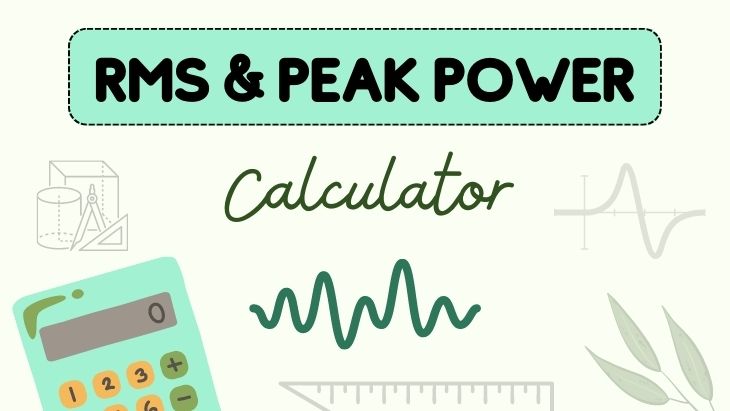Root mean square (RMS) refers to the continuous power handling of a speaker or the amount of constant power that an amplifier outputs. On the other hand, peak power refers to the highest amount of energy that a speaker can handle in short bursts without blowing.
An RMS calculator calculates RMS wattage from peak power. On the other hand, a peak power calculator calculates pea power from RMS wattage. In this article, we will show you how the RMS calculator and peak power calculator work.
How an RMS Wattage Calculator Works
RMS wattage refers to a measure of the wattage of a sinusoidal circuit in root mean square value. To calculate RMS wattage, you will enter the value of the peak power wattage. The calculator will convert the peak power wattage into RMS wattage.
The calculator uses the following formula to calculate RMS wattage:
WRMS = PW * 0.7071
Where:
WRMS = Root mean square wattage
PW = peak power wattage
According to the above formula, the calculator calculates RMS wattage by multiplying peak power by 0.7071.
How a Peak Power Calculator Works
To calculate peak power, you will enter the RMS watts into the calculator. The calculator will output the peak power.
The peak power calculator uses the following formula to calculate peak power:
Ip = IRMS * 1.4142
Where:
Ip = Peak power
IRMS = root mean square current
From the above formula, the peak power calculator finds the value of the peak power by multiplying the RMS by 1.4142.
FAQ
What does RMS stand for?
RMS stands for root mean square.
How do you calculate RMS wattage?
Simply multiply the peak power value by 0.7071.
Why is RMS used?
RMS is a mathematical method used to determine the average of a value that varies constantly.
Is 240v RMS or peak?
240v is the RMS voltage. In this case, the peak power is 240 * 1.4142, which gives you roughly 340 volts of the peak voltage.
Michael Evanchuk is a San Francisco-based sound engineer with 20 years’ experience installing, troubleshooting, and repairing commercial, automotive, and household sound equipment. Evanchuk owns an auto stereo center, where he offers highly competitive car audio installation and repair services. He has written dozens of articles on different sound engineering topics, all of which have been published in leading journals, blogs, and websites.





